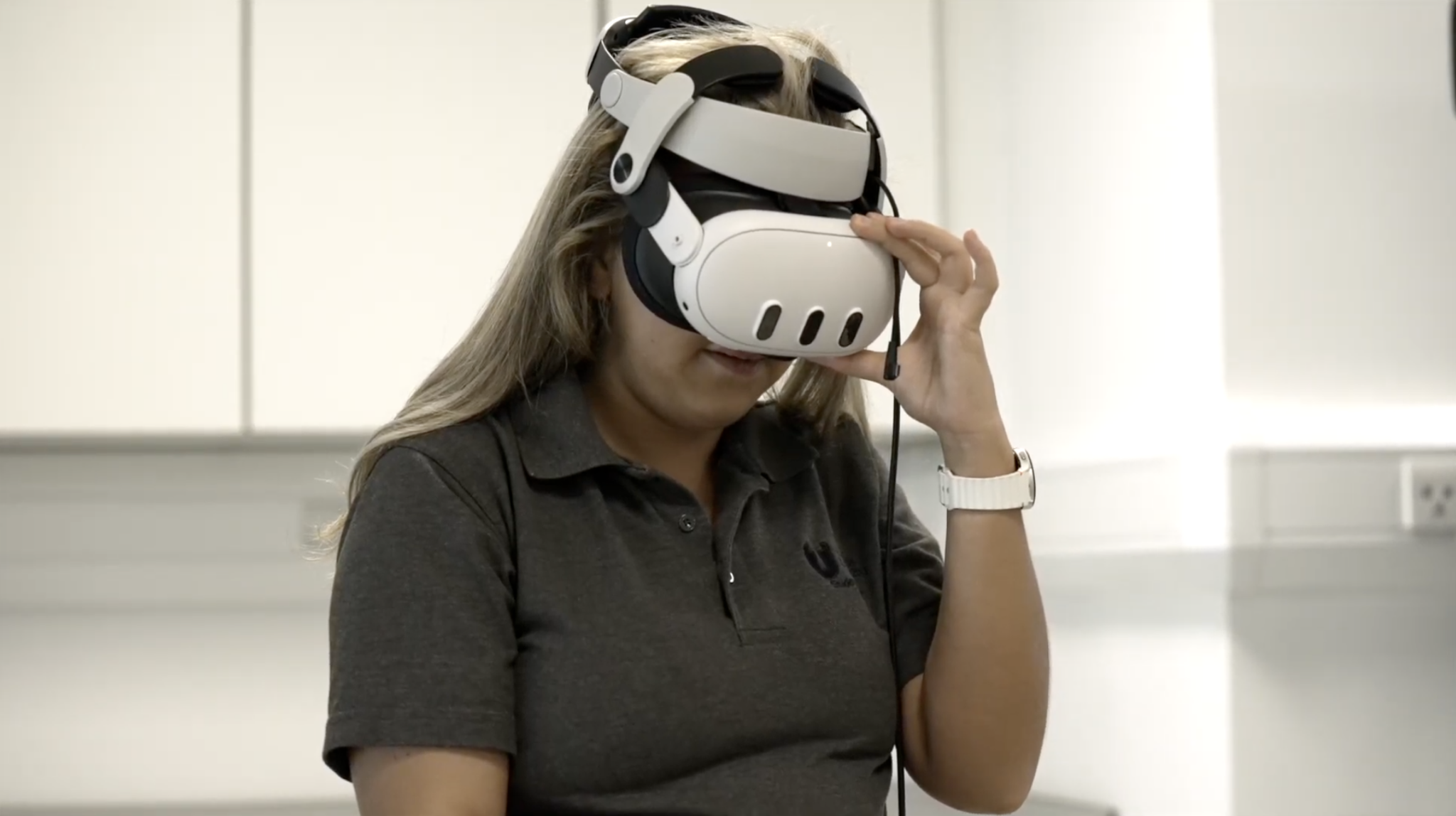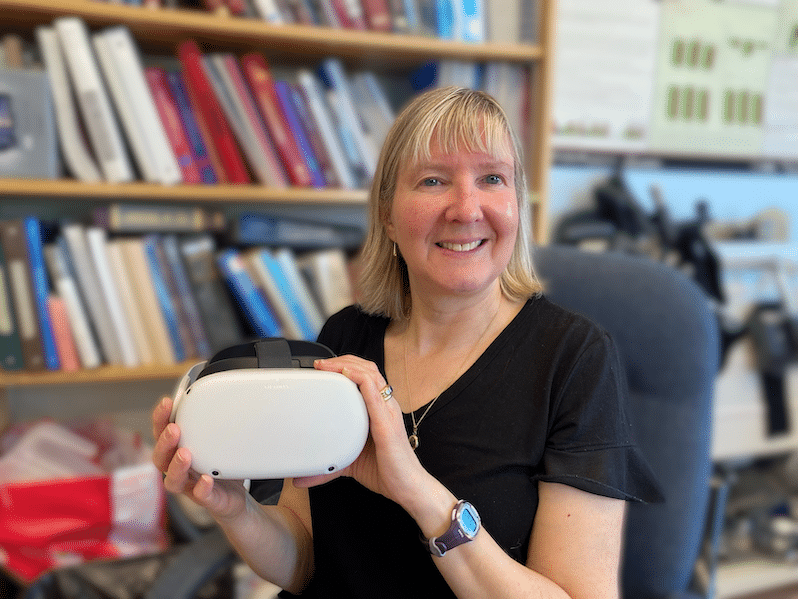On the forefront of technology, Teesside University is prioritising digital competency with its Future Facing Learning (FFL) initiative, digitally empowering both staff and students.
- “Students email in to say how better prepared they feel for clinical practice.”
Ptolemy Neoptolemos, Head of the Nursing & Midwifery department
Integrating technology at all levels, Teesside University is the first Adobe Creative Campus in Europe, and has become an Apple Distinguished School, highlighting its emphasis on technological advancement and integration into their curricula.
In the nursing program, technology “is in everything that we do” according to Dr. Ann French, Dean of School of Health and Life Sciences.
From state of the art simulation facilities to technological proficiencies embedded into the curriculum, Teesside’s nursing programme is at the forefront of technology in education, empowering and preparing future nurses for the changing landscape of healthcare.
Ensuring that student experiences are innovative with meaningful integration of technology into their education, graduating students will be prepared for both the clinical skills needed and the use of digital tools necessary to navigate modern day nursing practice.
As part of their work in leveraging technology to support student learning, Teesside University has implemented a week of Simulated Practice Learning (SPL) in each year of the three-year pre-registration nursing programme for all fields of nursing – such as adult, children and young people, mental health, and learning disability nursing – in order to prepare them for clinical placement and future professional careers.
What is Simulated Practice Learning Week?
Piloted in 2024, the first SPL week supported first year adult nursing students in their clinical skills practice.
Meeting the NMC requirements, this week replaced one week of clinical placement, supported by high fidelity simulations like virtual reality.
Students provided feedback on the week, which focused on realistic simulations to help first year students prepare for clinical practice and achieve nursing proficiencies.
Feedback from students was overwhelmingly positive, with reported improvements in knowledge, skills, and confidence levels following the simulations.
This year, the SPL week has been shifted earlier in the year for first year nursing students, to facilitate competencies for students prior to their first clinical placements.
With VR, “all students can access and achieve the same practice experience.”
Abigail Green
Associate Professor Clinical Simulation
Play Video about Teesside University
Using virtual reality to support SPL week
Why VR?
In keeping with its mission of digital empowerment, the nursing faculty at Teesside University has implemented virtual reality clinical simulations as part of its SPL week.
Immersive VR scenarios for nursing students is helping bridge theory to practice, and as clinical placements can be a source of stress and anxiety, VR simulations give students a safe place to make mistakes, repeatedly practice, and build confidence in their clinical skills.
Ptolemy Neoptolemos, Head of the Nursing & Midwifery department, says of the choice to include VR, it allows students to “experience clinical placement before going out to a real practice environment.”
Additionally, OMS scenarios provide both standardized and individualized experiences, and according to Abigail Green, Associate Professor Clinical Simulation, OMS scenarios ensure “all students can access and achieve the same practice experience” while providing personalized feedback on performance and identifying areas for individual development and action planning for future clinical practice.
Virtual reality simulations are being used to facilitate competencies towards the NMC framework and the knowledge and skills that will be assessed during clinical placements.
In particular, OMS is being used to support students’ critical thinking, decision making, and communication.
Dr. Ann French notes that “Healthcare is really challenging at the moment, and students are faced with many complex situations, not only with clinical skills but also with complex communication skills, and the ability to have simulated placements and VR experiences allows students to develop their confidence which is really important.”
How VR is used during the week
Before ever putting on a headset or launching an on-screen simulation during SPL week, sessions are held in advance for faculty training with support from Daniel Wade-Myers, Digital and Virtual Technologist.
Because there are over 100 students using computers to run simulations during SPL week, it’s important to ensure faculty and staff are familiar and confident in using the software to help students navigate it.
During SPL week, Daniel Wade-Myers and the wider simulation technician and clinical skills team ensure that the complex setup between high fidelity simulations and VR software is all set up and running smoothly.
Then, faculty hold an orientation and prebrief session for students. This involves familiarising students with the technology they’ll be using during the day, and faculty set expectations for learning objectives and outcomes to work towards using this technology.
Once these sessions have taken place, students begin their simulations with a foundational comfortability in VR, ensuring students are able to focus on the context of the simulation itself rather than navigating the technology.
At the end of the simulation day, students come back together to debrief the scenarios with the academic staff from the nursing team for a comprehensive and meaningful learning experience.

Student experiences
For students working through these simulations, feedback has been overwhelmingly positive.
Virtual reality simulations have helped students build their confidence, and reduce errors before going into clinical practice.
According to Ptolemy Neoptolemos, “Students email in to say how better prepared they feel for clinical practice.”
One key area of growing confidence for first year students is in their communication skills – for patients and with their future colleagues.
One student said, “I found the scenarios very realistic, as [the virtual patients] responded to the questions we asked them.”
Another student reported feeling the scenarios were “realistic” and “engaging” and noted that it was particularly helpful to “report back to a senior”, bolstering interprofessional communication skills.
VR simulations are helping students to bridge theory to practice, make mistakes, and build confidence before stepping into a clinical placement.
OMS is supporting students in specific skillsets and getting comfortable with objective measures, with one student noting “I’m a lot more comfortable with the NEWS charts” following VR simulation.
Another student reported feeling “more confident in doing the A-E assessment”, walking away knowing “what questions to be asking, what to look out for, and how to do the assessment in a certain process, and then ensuring that the patient is reassured and they’re up to date in their care.”
Overall, OMS use during SPL week is helping students “feel really confident”.

Key takeaways
Bolstering student confidence, building clinical and communication skills, and getting comfortable with the everyday tasks associated with clinical practice is what the Simulated Practice Learning week is all about.
By embracing digital technology and empowering faculty to support students with innovative clinical experiences, Teesside University’s nursing program is setting students up for success in their future careers.
For those interested in using OMS to support their learners, Abigail Green encourages reaching out for support from the team, as the OMS team has “helped at every stage.”
The OMS team can provide insight and support at every stage of the journey, from curriculum integration to onboarding and continued technical support, so everyone – students, faculty, and staff – can all get the most out of VR scenarios.
Future outlook
As OMS offers packages for unlimited learner access and the ability to Create customized scenarios, Abigail Green reports that “we can create what’s bespoke for our local area”, and while the team in the nursing program has embedded VR into their curriculum, the next step will be to expand use across midwifery and allied health programmes.
As the landscape of healthcare continues to evolve, so too must the training that prepares tomorrow’s clinicians.
Teesside University’s commitment to innovation, digital empowerment, and immersive learning has positioned it as a leader in nursing education.
By embedding virtual reality into foundational experiences like SPL week, students are gaining more than technical proficiency. They’re gaining confidence, critical thinking, and readiness for the complexities of real-world clinical practice.
With plans to expand VR use across midwifery and allied health programmes, Teesside University is not just adapting to change, it’s shaping the future of healthcare education.
Quelle:






